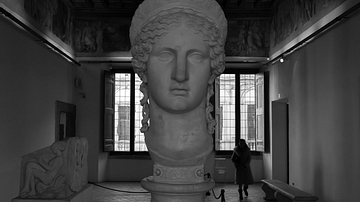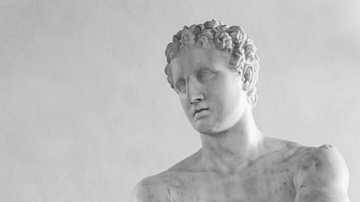Illustration
The Roman sarcophagus known as the Grand Ludovisi Sarcophagus, discovered near the Porta Tiburtina in Rome. The front scene depicts three layers of narrative: at the top are victorious Roman soldiers, in the middle are Romans fighting 'barbarians' and at the bottom level are defeated and dying 'barbarians'. Proconnesian marble, 2nd to 3rd century CE. (Palazzo Altemps, Rome)
About the Author
Cite This Work
APA Style
Cartwright, M. (2013, October 22). Grand Ludovisi Sarcophagus. World History Encyclopedia. Retrieved from https://www.worldhistory.org/image/2120/grand-ludovisi-sarcophagus/
Chicago Style
Cartwright, Mark. "Grand Ludovisi Sarcophagus." World History Encyclopedia. Last modified October 22, 2013. https://www.worldhistory.org/image/2120/grand-ludovisi-sarcophagus/.
MLA Style
Cartwright, Mark. "Grand Ludovisi Sarcophagus." World History Encyclopedia. World History Encyclopedia, 22 Oct 2013. Web. 20 Oct 2024.






